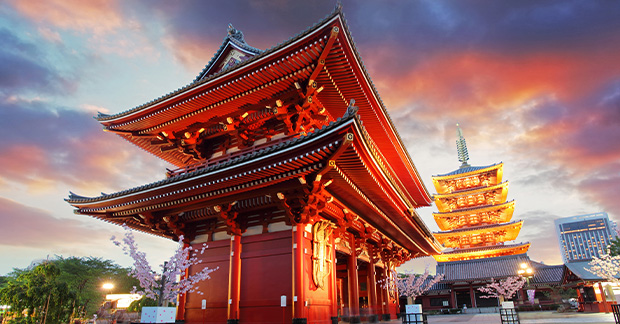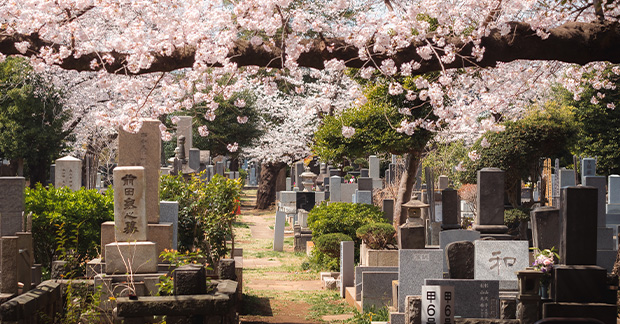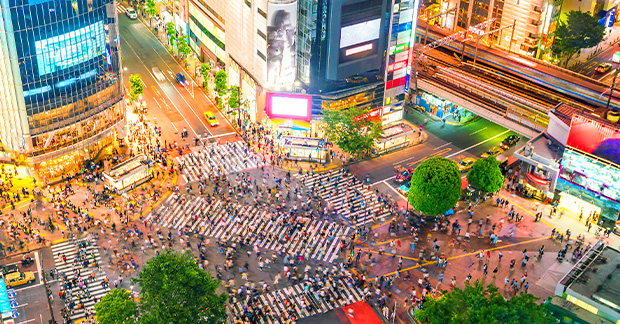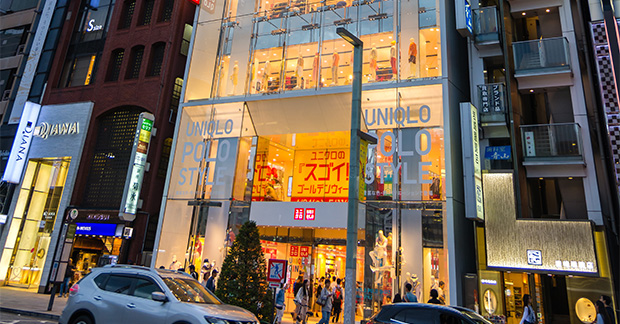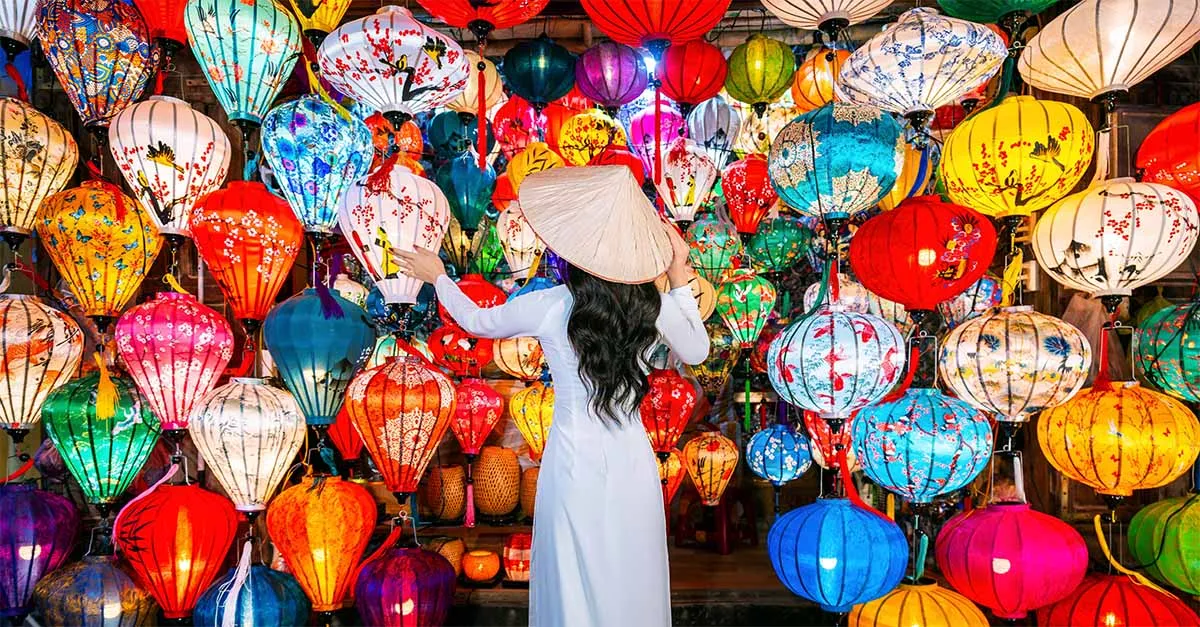You are viewing 1 of your 2 free articles
A guide to Tokyo’s most exciting neighbourhoods
Japan’s capital is one of the world’s largest cities – where old, new and kitsch blend together. Tamara Hinson explores the city’s best areas
Click here to download and save as a PDF
Akasaka
Why go?
In this sophisticated neighbourhood, huddled in the shadow of an Edo-era castle, modernity mixes easily with the old. The vast, glass-walled Tokyo Midtown shopping centre sits a stone’s throw from the Akasaka Hikawa Shinto shrine, which dates back to the 10th century. At the peaceful complex, stone pathways connect numerous torii gates and smaller shrines – many guarded by statues of foxes, believed to be messengers for Inari, the god of rice.
What to do
Akasaka is perfect for food and drink lovers. There are some brilliant bars and restaurants, including the Yona Yona Beer Works Akasaka, a beer hall-style venue where visitors can sample everything from Japanese-made stouts to pale ales. Bar & Salon Norainu, a tiny venue that feels fabulously homely, is also a must – expect kitsch statues, a soothing soundtrack of jazz and fabulous cocktails prepared by kimono-wearing servers.
Meanwhile, the quintessential Akasaka souvenirs are chewy wagashi from the Toraya sweet shop, which has made these traditional Japanese confections since the 1500s. History fanatics will delight at the State Guest House, where they can tour a fabulous former imperial residence styled on Vienna’s Hofburg Palace. The uniquely European building now hosts overseas dignitaries on state visits.
If clients are looking for somewhere plush to stay, Akasaka has some wonderful small hotels – including the Hoshino Resorts-owned, ryokan-style OMO3 Tokyo Akasaka, where perks include free tours of the area.

Shinjuku
Why go?
Shinjuku is one of Tokyo’s busiest districts – a tangle of skyscrapers, shopping centres and throngs of commuters. Nishi-Shinjuku, to the west of Shinjuku Station, has the highest density of skyscrapers and office buildings, so tourists typically gravitate east, where the bars and bookstores attract a youthful crowd.
What to do
Eastern Shinjuku has the best nightlife, restaurants and shopping, including the enormous Isetan and Takashimaya department stores (with spectacular depachikas – food halls – in their basements). The latest addition to Shinjuku’s skyline is the Tokyu Kabukicho Tower, which opened in April. Japan’s largest hotel and entertainment complex is home to the Hotel Groove Shinjuku, A ParkRoyal Hotel, Pan Pacific’s Bellustar Tokyo and a 900-seat theatre.

Harajuku
Why go?
A pocket-sized pit stop for all things kawaii (cutesy) and alternative, Harajuku’s main draw is a single pedestrianised street, Takeshita Dori, lined with some of Tokyo’s most weird and wonderful stores. At the weekend, cliques dress up in their favourite fashions, from kawaii lolitas to goths.
What to do
Shops specialise in everything from manga-inspired fashion to Hello Kitty merchandise, alongside boutiques filled with Japanese beauty products. Takeshita’s main drag can get crowded, so clients needing some time out should head to Yoyogi Park. The park backs on to the huge Meiji Jingu Shrine, a beautiful Shinto monument.

Asakusa
Why go?
The narrow streets are lined with ryokans and izakayas (bars). It’s a quiet neighbourhood that makes a fantastic base – at one end of the Tokyo Metro Ginza Line but just a short hop from the 634m Tokyo Skytree, the world’s tallest tower, and easily accessible from Haneda airport, thanks to the Asakusa Line’s Limited Express service.
What to do
The star of the show is the seventh-century Sens?-ji Buddhist temple complex. The temple and its stunning Kaminarimon (Thunder Gate) are connected by the Nakamise-Dori Shopping Street, packed with souvenir stalls selling beautiful yukatas (summer kimonos).

Yanaka
Why go?
It’s easy to miss, despite being a short walk from anime-mad Akihabara, but Yanaka is worth a spot on any traveller’s radar. This area has a distinctly villagey feel and is one of Tokyo’s oldest neighbourhoods.
What to do
Backing on to Ueno Park – great for cherry blossom-spotting during the spring – Yanaka is made up of narrow lanes weaving past ancient izakayas and craft stores. The latter are what Yanaka is known for, making it ideal for picking up everything from pottery to Japanese washi paper. Visitors to Shinimonogurui boutique can design a wooden hanko – a seal used in place of a signature. Advise clients to keep an eye (or ear) out for the talented buskers who serenade visitors on stringed shamisen instruments.

Shibuya
Why go?
The area, packed with shopping malls, hotels and restaurants, recently emerged from a massive makeover. Relatively new attractions include Shibuya Sky, an observatory atop a skyscraper, and Shibuya Stream, a riverside skyscraper that is home to restaurants and a hotel.
What to do
The neighbourhood is home to the legendary neon-drenched Shibuya Crossing. Every time the little green men appear, hundreds of people (many wielding selfie sticks) navigate the world’s busiest junction. For the best views, head to the Starbucks overlooking the crossing. At JR Shibuya Station, clients should look for the statue of Hachik?, a dog that became a national hero after walking to the station to meet his owner every day, continuing to do so for almost a decade after the man died.
Best of the rest
Tamachi
Stay in Tamachi, in one of Tokyo’s main business wards, for gorgeous Edo-era architecture and tree-lined canals. Book clients into the new, art-filled Pullman Tokyo Tamachi, and bag them a room overlooking the Shinkansen tracks so they can watch the space-age trains glide by.
Yaesu
Yaesu is home to Tokyo Station – a destination in its own right, with hundreds of stores, bars and restaurants. Head to Ramen Street, in the basement, to dine at one of Tokyo’s ubiquitous – but fantastic – vending machine restaurants. The area is in the midst of a major makeover, spearheaded by the recent completion of the Tokyo Midtown Yaesu project, a 45-storey tower.
Ginza
Clients will find the city’s most luxurious hotels here (the Tokyo Edition, Ginza opens this year), as well as Tokyo’s largest malls. It’s also home to the world’s largest Uniqlo store, where shoppers can customise clothing. Clients should consider visiting at the weekend, when main street Ginza Dori is pedestrianised.

Ask the expert

Simon Richards, product manager, InsideJapan
“As Japan gets more popular, Tokyo gets busier. So it’s worth exploring some of the city’s lesser-known districts. One is Yanaka – this is a low-rise, more traditional Tokyo with shops and street food businesses that have been in families for generations. There are also several shrines. The district provides a great insight into pre-war Tokyo.”
PICTURES: Shutterstock/TokyoVideoStock, Luciano Mortula, Korkusung, TTstudio, Dasian, f11photo
Book it
InsideJapan offers five nights’ B&B at Tokyo’s Pullman Tokyo Tamachi hotel, with Japan Airlines flights from Heathrow to Tokyo’s Haneda airport. Prices start at £3,198, including an IC prepaid transport card with ¥3,000 (about £16) credit.
insidejapantours.com
Read more
x.travelweekly.co.uk/destinations/5-top-long-haul-destinations-for-disabled-travellers">Top 5 long-haul destinations for disabled travellers
x.travelweekly.co.uk/destinations/japan-exploring-less-travelled-gifu-and-ishikawa">Japan: Exploring less-travelled Gifu and Ishikawa
x.travelweekly.co.uk/destinations/tap-into-the-growing-cruise-and-stay-market">Tap into the growing cruise-and-stay market



